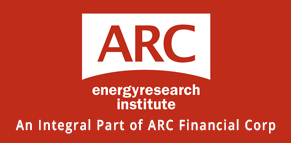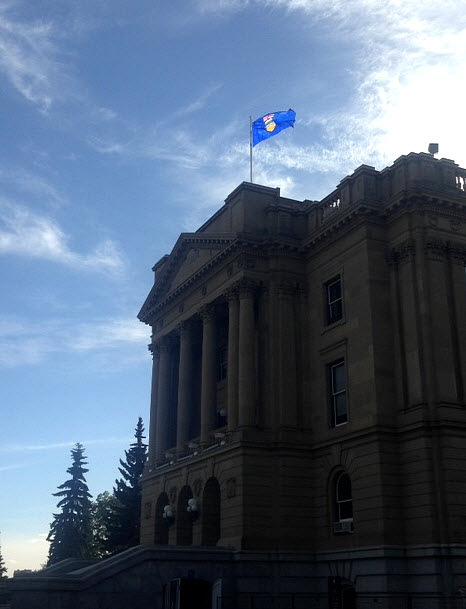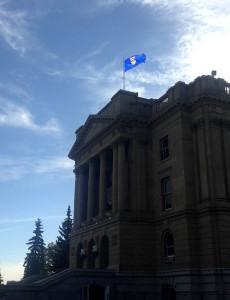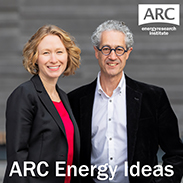Commentary – Business Not as Usual After the Election
BAU, or “Business as Usual,” is the comfort scenario that leaders envision when thinking about the future. The next government of Alberta, whatever it looks like, and whoever leads it, should be planning for B-NAU in the coming months and years: “Business – Not As Usual”.
Oil and gas, the biggest business in the land, is not just in the midst of the worst financial downturn since 1998, but is also experiencing transformational shifts not seen in 100 years. BAU-type thinking is misplaced, even if and when commodity prices recover.
Big trends are already in play in the B-NAU world of oil and gas. None are waiting for election results and cabinet selections.
Year-to-date, more than a dozen oil sands projects have been delayed or cancelled, and more will join the list. The whisper mill says that Suncor’s Fort Hills will be the last of the multi-billion dollar megaprojects the industry ever builds. Long payback periods, uncertain returns, volatile oil prices and carbon baggage are no longer BAU scenarios that can be inserted into corporate planning binders. So any political talk about moderating oil sands growth is yesterday’s news; market forces may have already taken care of that issue.
Canada’s oil and gas industry is bifurcating into two camps: progressive companies that are able to adapt to lower oil and gas prices, and those that can’t (or don’t know how). New investment capital is still flowing into the industry at a rapid pace, but only selectively to innovative companies, and the majority is flowing to the half of Alberta’s oil and gas business that is not involved in the oil sands. Radical technological advances such as horizontal drilling and multi-stage hydraulic fracturing have opened up a whole new frontier of development. One consequence: The call on labour is evolving toward higher education, a consequence of greater automation and instrumentation in the oilfields. Government labour policy will no longer be about head count, it will be about brain count.
Pressure on carbon emitters, and the jurisdictions that govern them, will continue to increase. In the case of Alberta’s oil producers, the production emissions for extracting a barrel of oil have a wide, three-to-one gap between the bookends of carbon intensity. Light barrels are on one end and in situ bitumen is on the other. Then there is the downstream consumer that actually burns the stuff and emits between four-and-ten times more carbon into the atmosphere. The new business of carbon is becoming much more complex than the one-tax-fits-all policy planks put forth by the various political parties. Amidst this, the uneconomic subject of refining and “value-add” has been resurrected. Doesn’t Alberta have enough carbon emissions to deal with already?
So far this year, the near-term reality is that oil and gas revenue is down by 45%; royalties are down by half; and cash flow has evaporated to levels not seen since the early 2000s. Assuming prices stay near the levels recorded in the first quarter, the upstream industry as a whole won’t make any money this year, the first time since 1998. No income means no big tax cheques will be paid provincially or federally. This faint fiscal pulse should beat a bit stronger in 2016, but in the B-NAU world of volatile commodity prices there will be fleeting value in a barrel of oil, and little value to be had in a thousand cubic feet of natural gas. Contrary to popular belief, few geese are laying golden eggs in the business, so there aren’t many eggs to pass around. Debates about raising taxes and reviewing royalties are worthy of discussion, but are mostly moot if the target is the oil and gas industry.
Investment is where the real future prosperity of the province lies. In Alberta, royalties and taxes paid by oil and gas companies add up to between $5 billion and $10 billion a year, depending mostly on commodity prices. Admittedly, it’s a lot of money for Alberta’s public purse, but these sums pale in the context of the record $58 billion – almost $1.1 billion every week – that oil and gas companies invested in 2014. Directly and indirectly, that’s what feeds and employs people here (who then buy stuff from other people and pay income tax). But investment into Alberta is more than just about the ups and downs of oil prices: Americans have transformed from being Alberta’s best BAU customer to its biggest B-NAU competitor. Money is mobile. The newly-elected or re-elected, government will have to work with oil and gas stakeholders to ensure that future investment dollars generated in the province continue to stay in the province.
Amidst big changes there is always an urge by a newly elected government, incumbent or otherwise, to pull some policy “levers.” Yet levers, by definition, amplify force. The fear is that business-as-usual levers will be pulled in a business-not-as-usual environment. The last thing that’s needed is a conductor pulling levers on a train that’s changing tracks ahead, while looking backwards at the caboose. Besides, trains don’t have cabooses any more; that mode of operating was BAU a long time ago.



